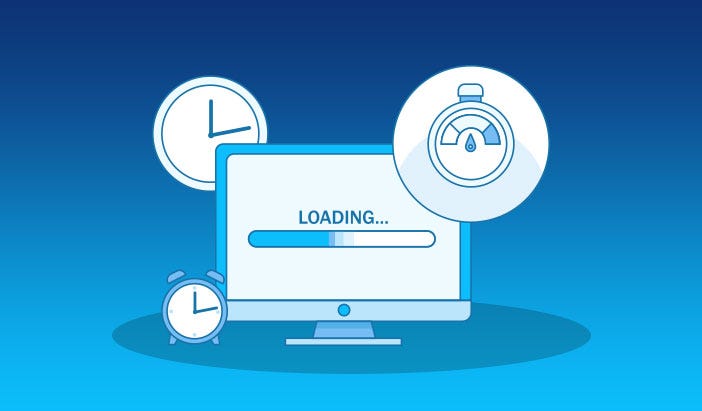The webpage loading time refers to the amount of the time that is consumed by a webpage for fully loading after a user clicks a link or types a web address. It is generally measured in seconds. The page loading time is a crucial aspect that must be considered. If a website is taking a lot of time to open, then, it can affect the goal of the business. Slow page loading can negatively impact the user engagement, and certainly it will impact on the business performance. So, all the businesses must ensure that their website is performing in the best possible manner.
Optimizing the page loading time
Webpage loading speed is a crucial part of the website’s usability. As per Google, there are numerous ranking-related factors, and this is one such factor that can influence a website’s position in the search engine ranking. This factor also enriches the user experience. In the realm of the Internet, numerous websites clash with each other to rank as there is a lot of competition. If the website is not loading quickly, then it could lose visitors. As a result, the business is likely to lose competition. On the other hand, if the website is loading at high-speed, it can certainly boost the website’s crawl rate. The faster the pages are loading, it becomes easy for Google to crawl pages. Some techniques that can easily optimize your website’s loading time are as follows:
Optimizing the image size as well as the format
The image that your website is using can take a lot of bandwidth and certainly it can affect the loading time of your page. Use the best picture editor tools to resize the images such as photoshop. Try to set the images at 72 DPI. In order to optimize the loading time of the page, please stick to image formats such as GIF, PNG, JPG. The images must be optimized in a perfect manner. If the images are of very high resolution, there is a possibility that the loading time of the website will go up. Use the image compression tools to suppress the size of the images. Try to reduce the file size but also ensure that the quality is not compromised in any way. The end user experience should not get impacted.
Please avoid CSS files and inline JS
It is literally seen as a good practice to place the website’s JS and CSS in the external files. So, whenever the page gets loaded, the browser caches these files externally. As a result, it reduces the loading time of the pages on subsequent requests. Such tactics truly work. Moreover, there are other benefits such as having the CSS and JS files externally because it becomes easy to maintain the website.
Avoid the render blocking scripts
Please try to place the javascript files at the end of the body or use the ‘async’ attribute for loading them asynchronously.
Avoid the redirecting
In order to optimize the speed of the website, please avoid excessive redirecting. Some redirects are unavoidable, but it is important to remember that this requires additional HTTP. Certainly, it increases the website load time. Also, check the broken links and fix them on a prompt basis.
Please reduce the HTTP requests
Try to use the CSS sprites and diminish the number of image requests. Please combine the background images into a single image. Please combine the inline images in your cached style-sheets. Similarly, try to combine your javascript file into one single file.
Reduce the size of the cookies
Cookies are used for storing data that needs to be continuous between the requests. The data is delivered on every request, and it adds to the load time when it becomes bulky. Hence, it is important to reduce the size of the cookies, and by doing this you also reduce the size of the data that is transferred. This tactic decreases the page load time. Also, eliminate the unnecessary cookies and reduce the size of the cookies.
Do the auditing of your website on a regular basis
On a regular basis, do the audit of your website. It will also improve your user experience and contribute to SEO success. Just analyze how your website is handling the content. Ensure that your website can be easily accessed on the mobile phone as well. This will help in ensuring SEO success.
Track the 404 errors
The page not found or 404-error appears when the users try to access such pages that have been deleted. Generally, the netizens do not return once they have met the 404-error. If the netizen is not coming back again, you are likely to lose the potential customer. So, please solve the 404-error by using free, external tools and track down 404 outcomes. Also, remove the dead links.

